Quick guide and location map
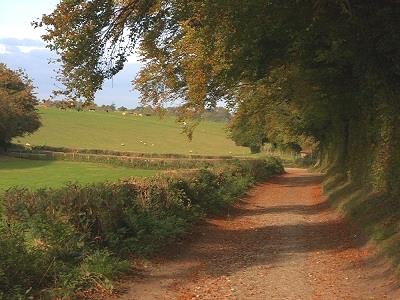
Historic parkland that lies between Dorking and Leatherhead in the Surrey Hills National Landscape with scenic views of Box Hill from the hilltop. Lovely walks to enjoy through woodland, farmland and grassland, whilst discovering an abundance of wildlife and the River Mole. Please always follow the Countryside Code.
Quick guide
- Address and references: Young Street, Leatherhead Surrey KT22 9DX
Ordnance Survey (OS) grid reference: TQ158538
What3Words: head.paused.region - Type of site: historic parkland.
- Accessibility: some accessible areas and nearby accessible toilets.
- Facilities: mobile café (Wild!... About Coffee at Woodland Hub) and nearby toilets, What3Words reference: teeth.grabs.town.
- Nature to discover: birds, butterflies.
- Dogs: please keep your dog under control.
- Size: 11.53 hectares (28.5 acres)
Location map
On the map below, use the plus symbol to zoom in to see the locations of the site's paths and car parks and the minus symbol to zoom out to view where the site is situated in Surrey, and to see other countryside sites nearby. The home symbol resets the map to the default setting.
Norbury Park has many footpaths and three free car parks:
- Both Fetcham and Young Street car parks are located off A246. Please note: no right hand turn into Young Street off A246.
- Young Street car park What3Words reference : solve.closet.first
- Fetcham car park What3Words reference: rigid.vine.city
- Crabtree car park is situated off Crabtree Lane in Westhumble, RH5 6BQ with What3Words reference: feared.grape.vanish. This is the nearest to Box Hill and Westhumble railway station.
Visitor Information Video
Site details
Description
This historic parkland was first mentioned in the Domesday Survey of 1086. In 1930, we purchased 530 hectares of Norbury Park, situated between Dorking and Leatherhead, to save it from development and to keep this land available for public enjoyment for ever.
Norbury Park estate is a much-valued resource for recreation, farming, woodland and nature. There are three working farms (expect livestock and machinery) many walking and cycling trails to discover, the River Mole, chalk grassland, woodland, some of it ancient and wonderful views to Box Hill from a hilltop viewpoint.
Please take care of our countryside and open spaces by following the Countryside Code.
What you can do here
- Natural play trail available for all ages at Young Street.
- Picnic area with benches at Young Street.
- Accessible trail from Young Street car park to River Mole.
- Picnic area and mobile café (Wild!.. About Coffee) near the Woodland Hub serving hot and cold refreshments Thursday to Sunday 9am to 3pm (What3Words reference: teeth.grabs.town).
- Dog walking - please keep dogs under control and away from grazing animals and machinery on the farmland.
- Experience peace and tranquillity on various walking trails.
- Visit Bocketts Farm wildlife park with café and toilet facilities.
Self-guided walks
New signposts for self-guided routes will be publicised as soon as they are ready.
You can find this route on the AllTrails.com app Norbury Park Western Circular
Rail to Ramble route from Box Hill and Westhumble Station - Norbury Park Walk on Surrey Hills website
What you can see here and when
- Scenic walks through classic English farmland
- The River Mole running through the park
- Hilltop viewpoint towards Box Hill
- Ancient yew trees in Druids Grove near Swanworth Farm.
- Nature to discover: lots of birds and mammals have been seen here throughout the year. Butterflies can also be spotted here, on sunny days in late spring and summer. You may also see a few mammals such as roe deer and badgers. Browse the Surrey Wildlife Trust Wildlife Explorer to find out more about the wildlife that can be seen in Surrey.
Accessibility
- Wheelchair access and toilets at Bocketts Farm from their own parking area
- Surfaced flat track from Crabtree Lane car park towards the picnic area and mobile coffee van
- Surfaced flat track from Fetcham car park into the estate
- Some areas accessed from Young Street car park are suitable for wheelchair users, buggies or those with limited mobility
- An accessible route, the Leatherhead Riverside Walk is nearby.
Facilities
- Three free car parks.
- Natural play trail at Young Street
- Picnic benches and seats around the estate.
- Toilets (at Bocketts farm) - accessed from Fetcham car park off A246.
- Self-guided walking and cycling trails.
- Wild!... About Coffee mobile café: coffee and refreshments served from a Land Rover at the top of the hill, surrounded by shade and picnic benches in the heart of the site, close to the private Norbury Park House.
- Box Hill and Westhumble railway station is close to Crabtree Lane on the southern perimeter of Norbury Park.
- Bus routes 465 and 478 stop at Fetcham car park from Leatherhead centre.
Car park locations
There are three free car parks serving Norbury Park.
Fetcham and Young Street car parks are located off A246 (please note, there is no right hand turn into Young Street off A246).
Crabtree car park is situated off Crabtree Lane in Westhumble, RH5 6BQ. This is the nearest to Box Hill and Westhumble railway station.
Self-guided trails
There are three self-guided routes within Norbury Park, the Butterfly, Fox and Hazel trails. Take a photo of the information board in the car park before setting off and follow the colour coded routes and signposts along the way.
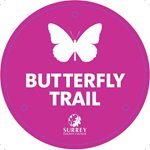 The Butterfly self-guided trail - 2.0 mile, 45 minute walk
The Butterfly self-guided trail - 2.0 mile, 45 minute walk
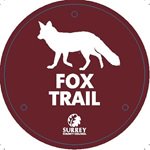 The Fox self-guided trail - 0.8 mile, 15 minute walk
The Fox self-guided trail - 0.8 mile, 15 minute walk
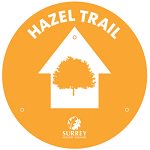 The Hazel self-guided trail - 2.6 mile, 1 hour walk
The Hazel self-guided trail - 2.6 mile, 1 hour walk
We also have a sensory trail waymarked just off the Butterfly and Fox trails this short trail has benches located throughout to help you to take in the sights and sounds of nature and the peaceful woodland.
Site management, contact and designations
Site management
We own and manage Norbury Park, including public access, site management and litter bins, car park and visitor services such as the new play trail.
 You will find information about how this site is managed for conservation and the wildlife to look out for at Surrey Wildlife Trust.
You will find information about how this site is managed for conservation and the wildlife to look out for at Surrey Wildlife Trust.
Contact
Send us any photos you take that you're happy to share on social media, tag @ExploreSurreyUK
If you need to contact us about any issues at Norbury Park, please use one of the options below:
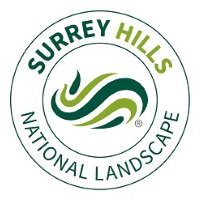
Environmental designations of Norbury Park and what they mean
Surrey Hills National Landscape, an Area of Outstanding Natural Beauty (AONB) covers a quarter of the county of Surrey. The Surrey Hills AONB was created in 1958 for conservation due to its significant landscape value and enjoys levels of protection from development. Find out more about the Surrey Hills.
Grade II Registered Park and Garden - find out more about Norbury Park and its designation in Historic England's Register of England's most important historic places.
Site of Special Scientific Interest (SSSI) is a formal designation of conservation. Sites must be kept in a healthy state to protect their special habitats and features.
Norbury Park Sawmill
Following the closure of Norbury Park Wood Products in 2021, Surrey County Council created a ‘Vision’ for Norbury Park. This included re-purposing the old sawmill site into a ‘Woodland Hub’. The Hub creates opportunities for the local community and businesses to engage with traditional woodland crafts and rural skills training within the woodland of Norbury Park.
So far we have:
- Continued to undertake improvements to the buildings and services, to ensure they are safe. This includes work to improve the water supply, toilets and repairs to the roofs.
- We are working with the Surrey Youth Offer Service, who are using the hub to support young people to build skills and contribute in a positive way to the communities and natural environments of Surrey.
- Installed accessible, off-grid toilet facilities that are open to
the public. - Created areas for woodland craft training activities.
- Run a ‘Social Value’ log scheme, using timber from Norbury Park, with logs given to local schools to support Forest School outdoor classrooms.
- We are working with local volunteers and partners to develop ideas for woodland produce, such as coppiced Hazel, being converted into tree planting stakes
We aim to sensitively create a Woodland Hub that sits comfortably in Norbury Park, integrating sustainable woodland management and engaging visitors on the importance of this wonderful woodland habitat.
The history and wildlife of Norbury Park
Flora and fauna
Norbury Park's 530 hectares of varied landscape offer a remarkable diversity of habitats. This includes traditional farmland, chalk grasslands, ancient woodland and the beautiful River Mole meandering through the southern part of the site. Although surrounded by rural towns and housing, the park has a tranquil, undisturbed feel that is protected by the organisations involved in its care, including the Norbury Park Forum whose local and specialist knowledge is second to none.
There is something different to see whatever the season in Norbury Park:
- In the spring, expect to see wild garlic, wood anemones and carpets of bluebells in the ancient woodland, as well as primroses and violets in the hazel and chestnut coppiced areas.
- In the summer months, the open chalk grassland displays its annual blaze of colour with many varieties of wild flowers and the many varieties of butterfly and insects that rely on this habitat. The hedgerows that link these open fields are rich food sources for birds, dormice, badgers, foxes and deer.
- Autumn colour is plentiful in Norbury Park's woodlands, but the winter months also bring their own beauty and it's a great time to be outdoors and discover the many public paths or walking trails here.
The River Mole attracts many aquatic species as well as birdlife throughout the year. Expect to see dragonflies, damselflies, heron and families of ducks, including some exotic ones. You may also be lucky enough to see the blue flash of a kingfisher as it darts along the riverbank.
Listen out for wildlife by taking some time out to experience the peace and natural woodland habitat of Norbury Park on the short Sensory trail that has benches to rest on. The trail is noted on the on-site information boards and located in the wooded area known as the Scrubs, near Fetcham car park.
The house and parkland
A settlement has been at Norbury Park since the 1300s and is mentioned in the Domesday Book. Mickleham Manor, as it was known in those days, was owned for over 200 years by the Stydolf family, it later became The Priory. In the 1700s the parkland was an open landscape with three drives radiating from the priory.
During the 1800s, various owners improved the land around the house, including creating new paths to move around the parkland and overseeing the installation of the railway line, with strict restrictions to minimise its impact on Norbury Park's natural beauty. Sir Leopold Salomons, banker and financier bought the house in 1890 and planned to bequeath it to the nation, however he died before he had done so. He is well-known as the owner of the neighbouring Box Hill, which he donated to the National Trust in 1911.
In February 1930, after almost two decades of neglect, Norbury Park was put up for auction and possible speculative housing development. James Chuter Ede, then Chairman of Surrey County Council and a great lover of the Mole Valley, secured an option on the property which was then purchased by SCC, to save it from development. The mansion and 17ha of park around it were sold on in 1932 to a well-known aviationist and his wife, Dr Marie Stopes, scientist and writer, who lived there until her death in 1958. The house has remained in private ownership since.
The current Norbury Park house has a spectacular drawing room in which three of the four walls are decorated with landscape scenes, the fourth having a large window with views south to Box Hill, emphasising the natural picturesque quality of the park and the Mole valley. The ceiling is painted as sky seen through a circular trellis.
Of the land owned by Surrey County Council bought to save it from development, there are varied habitats that are managed for biodiversity and conservation nowadays. The farmland is farmed under tenancy; the chalk grassland areas are managed by Surrey Wildlife Trust and there are many paths open to the public for access.
The Bothy
The Bothy started life as the kitchen garden for the Manor house in the 1700s and sale particulars in the late 1800s note that it comprised a vinery, peach house, orchid house and a gardener's cottage, with a separate orchard to the east of the garden.
Latest updates
Mole Gap Trail diversion
The Mole Gap Trail which runs through Norbury Park currently has a temporary diversion in place due to Ash Dieback disease, which causes ash trees to become weak and unstable. Please refer to all on-site diversion signage and interpretation boards to view our suggested diversion route and all self-guided trails within Norbury Park. We apologise for any inconvenience caused.
Ash dieback
Ash dieback (ADB) is considered the most significant disease to affect the United Kingdom's tree population since Dutch Elm disease in the 1960s and 1970s. It is expected to cause the decline and death of over 90% of ash trees in England. Sadly, the disease has advanced considerably due to the extreme climatic conditions we have experienced in the last few years.
Ash trees are the third most common native tree in the UK, found in woodlands and other landscape settings. ADB is caused by a non-native fungus called Hymenoscyphus fraxineus that weakens a tree's structure. Infected trees often see their leaves and branches dying higher up the tree, with the tree becoming weak and unpredictable, often becoming dangerous long before they die.
Ash dieback tree felling works will take place at Norbury Park this autumn. A map in PDF format of where ash trees will be felled in Norbury Park is available to view below.
Updates on felling taking place
- We are pleased to announce that Public Right of Way 22 (Bridleway) and the connecting Crabtree Lane car park are now fully open as all felling works are complete.
- The works at Mickleham bends have now been completed.
- Works carried out in Bookham Wood are now complete.
- Works will continue in 2025 at points along the Mole Gap Trail, the railway line, Young Street and along the self-guided Butterfly trail.
Please note that dates are always subject to change and dependant on contractor availability, weather and other factors.
Updates will be posted on this webpage, through social media, on-site signage and our Countryside Matters newsletter.
Neospora in Norbury Park
Dog waste in Surrey's countryside is a big problem for people, livestock and wildlife. If dog waste is not disposed of responsibly, a parasite called Neospora can be transmitted to livestock, causing diseases which can result in miscarriage in cattle.
Sadly, 25% of the herd in Norbury Park Farm are infected with Neospora and culling of infected cows has led to a 45.5% drop in milk production since 2021.
As a responsible land owner we are asking those who visit Norbury Park with dogs to help us to protect the rest of the herd by not walking dogs through the fields accessible from Young Street car park until 30 April 2025. This trial initiative will help us to support the local farmer and protect the herd from further infection.
There are many excellent alternative walks within Norbury Park that won't affect the livestock. We recommend parking at either Fetcham (KT22 9DX) or Crabtree car parks (RH5 6BQ).
Information video on Neospora in Norbury Park

